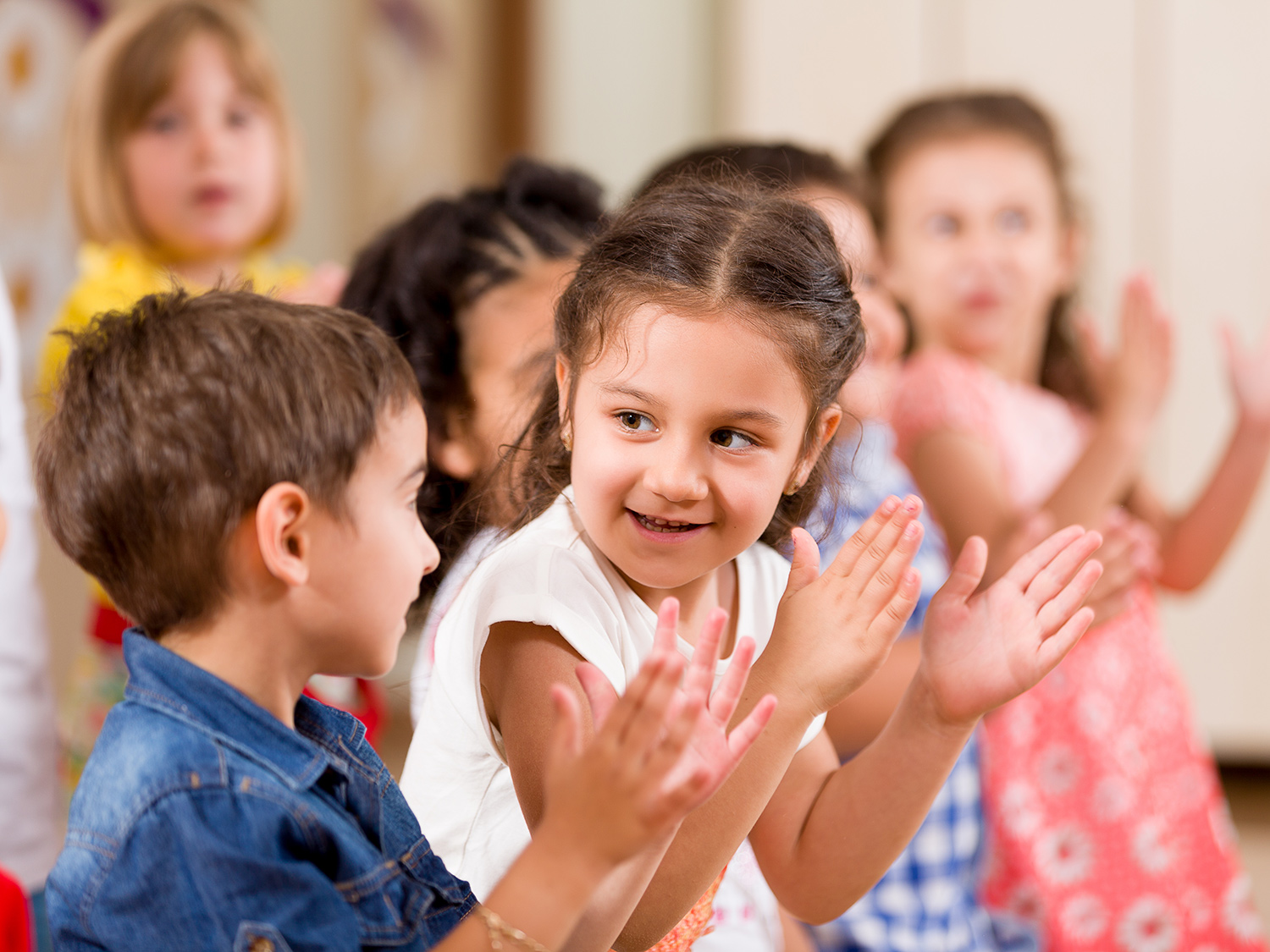The preschool years are a magic time in development. Children move from being almost entirely dependent on their parents, to being somewhat independent beings in the world. In virtually every aspect of development, their knowledge base and competencies are exploding, not the least of which are their social and emotional skills.
The preschool years (ages 3 to about age 6) begin with the tail end of Erik Erikson’s second stage of psychosocial development: Autonomy vs. Shame and Doubt. In this stage, children are learning to be self-sufficient in ways such as self-regulation, toileting, feeding, and dressing. Around the age of four, they enter the third stage of psychosocial development: Initiative vs. Guilt. Over the course of this period, children learn to imagine, to become more independent, to broaden their skills through play, fantasy, and exploration, and to engage, participate, and cooperate with others, including peers. According to Erikson, if these goals are not accomplished, the child will become fearful, socially excluded, limited in his ability to play, and negatively dependent on adults.
Looking for book and reading ideas for your preschooler? Sign up for our Scholastic Parents newsletter.
While seeming lofty, these goals are achieved by most children through natural interactions with family and other caretakers. While preschoolers are also learning how to relate to peers and interact with them, most of the social and emotional growth occurs in the relationship with caregivers. One of the challenges of this period is to learn to navigate maintaining the secure attachments accomplished during infancy and toddlerhood, while simultaneously differentiating oneself as an individual.
Individuation for children over the preschool years means developing a better understanding of who they are, as well as beginning to understand and relate to others. Creating this personal identity means exploring many fundamental aspects of themselves—gender, race, personality. At age 3, children still believe they can grow up and transform genders. By 6, they understand that gender is more or less a fixed aspect of their identity. Thus, over the preschool years, children begin to have a sense of the stable characteristics that make them the unique person that they are.
In the course of this development, preschoolers also learn more sophisticated ways to relate to others. For example, empathy develops, beginning at around age 2 but becoming more visible between ages 3 and 5. When a child experiences empathy, he realizes that he can positively affect another by taking action or offering help (e.g., getting a band aid for a crying peer). While empathy can be fostered, it seems to be an inherent part of development across cultures. On the flip side of empathy is the negative ways preschoolers learn to impact others. While toddlers may flail about in anger, preschoolers can use aggression to willfully inflict harm. A fun way to help manage your child’s aggression is The Grouches, an app put out by the American Psychological Association.
One challenge to parents of preschoolers is to support their developmental drives, while also fostering development. For example, parents can help curb preschool aggression by teaching children about emotions, helping them learn the names for the feelings, and giving them an outlet for their expression. One wonderful way to help children this age experience and express emotions is through play. Play is children’s work and dramatic play has the added benefit of allowing children to experiment with and understand social roles. It also provides opportunities for children to develop social skills, express and cope with feelings, relieve stress, exercise control over their surroundings, and experiment with decision making.
Children’s imaginations can take them wonderful places, alone or with peers. It is over the preschool years that children move from parallel play (where “friends” play side-by-side but separately) to social play (where friends interact, share ideas, and build off the play of the other). During this time, children begin to be able to play games, where they learn turn taking and sharing, as well as how to adhere to the rules. What children learn through these playful interactions is many-fold!: they are beginning to learn to interpret others’ perspectives, to regulate their responses and interactions, manage impulse control, increase both their ability to wait and to demonstrate patience, as well as their ability to share an object or event. Being able to follow rules and manage emotions is tough for young children. Supporting your child as you play games together is a great way to foster his social skills. Learn more on how to help your child contend with impulsivity here.




